Learn How to Make Full Backups with 3 Windows 10 Backup Options
PAGE CONTENT:
- Make Full Backups With Windows Built-in Tool
- Create System Image Backups in Windows 10
- Make Full Backup with Qiling Backup
A computer user should always make a backup for the files and data in case sudden power outrage happens and occurred a severe data loss. Also, making a backup is one of the best ideas to protect your documents, photos, and computer settings from virus attacks or OS crashes.
For Windows PC, users have many options to create a full backup. Once set up, you can even schedule back up the chosen files and folders. In this article, we list three Windows 10 backup options for you to choose from. You can pick whichever according to your needs.
Make Full Backups With Windows Built-in Tool
Making a full backup means to make a copy of anything on your computer, and store them in another safe location such as another drive or network drive. Then when you encounter data loss situations, the backup you created would help you restore files.
Windows 10 has a built-in backup feature, it supports users to back up files to another drive and restore them if the original files are lost, damaged, or deleted. To back up files on Windows PC, follow these steps:
Step 1. Right-click the Windows icon, choose Settings > Update & Security > Backup.
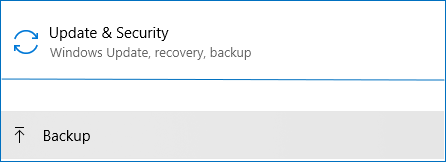
Step 2. Here you can back up using Windows File History. Click More Options to open Windows 10 Backup Options.
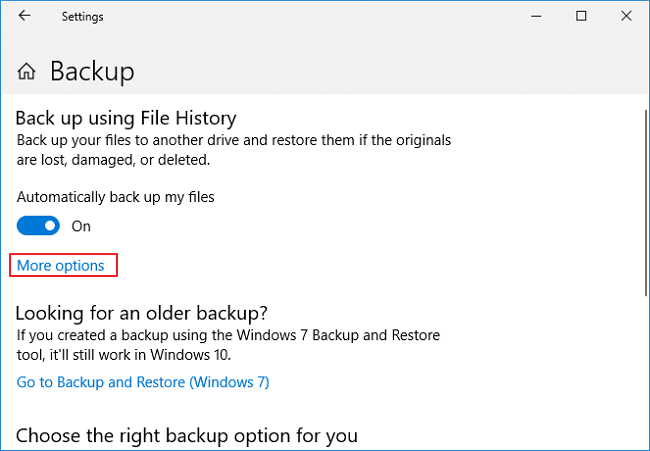
Step 3. Under Backup Options, you can customize the backup time interval, how long you want to keep your backups, which folders you want to back up, and you can even choose to back up your files to a different drive.
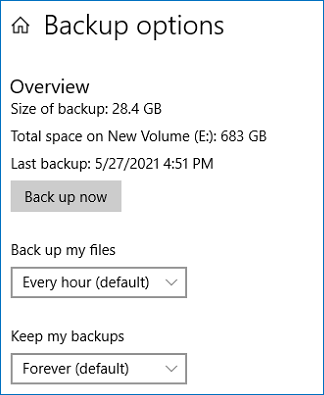
Step 4. Once you have set up, File History will back up the folders you choose according to your setting.
Create System Image Backups in Windows 10
If you want to create a system image, Windows 10 can also help you with it. You'd better create an image tool for an external hard drive or a network share folder. But one thing worth mention is that the System Image Backup is no longer a maintained feature. We decide to introduce this method is only because this feature is still available in Windows 10. Now, follow the steps below to see how to create system image backups.
Step 1. Right-click the Windows icon, choose Settings > Update & Security > Backup.
Step 2. There is an option called "Looking for an older backup?", click "Go to Backup and Restore (Windows 7)".

Step 3. Click the Create a system image option on the left.
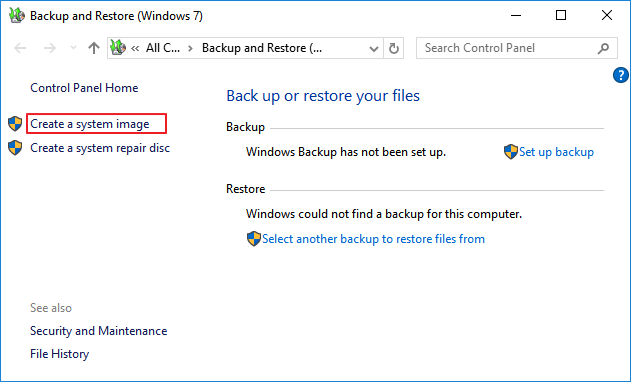
Step 4. Choose the proper disk to store the backup image and click Next.
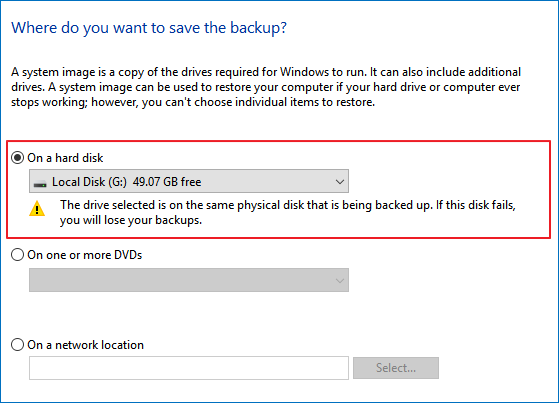
Step 5. Select any additional hard drives to include them in the backup. Then click Next.
Step 6. Click the Start backup button to start.
Make Full Backup with Third-Party Software
Another option for Windows 10 backup is to apply a third-party backup tool. Usually, third-party backup software is more powerful than Windows built-in tools. Because the developer would optimize the backup function and add new features to attract users.
One such tool is Qiling Backup, it performs great in data backup, and added some amazing features such as migrate OS to SSD, create differential and incremental backup, and back up files to a cloud drive like Google Drive or OneDrive.
You can download Qiling Backup from the button below, and follow the guide to see how to back up files on Windows 10.
Step 1. Open Qiling Backup and select "File backup" in "Backup and recovery" page.
You may have a large amount of vital data to be protected as time goes on, such as documents, pictures, music, and videos, etc. It is always a good habit to have a backup on a regular basis. File Backup is one of the best choices for you to get over unexpected data loss.
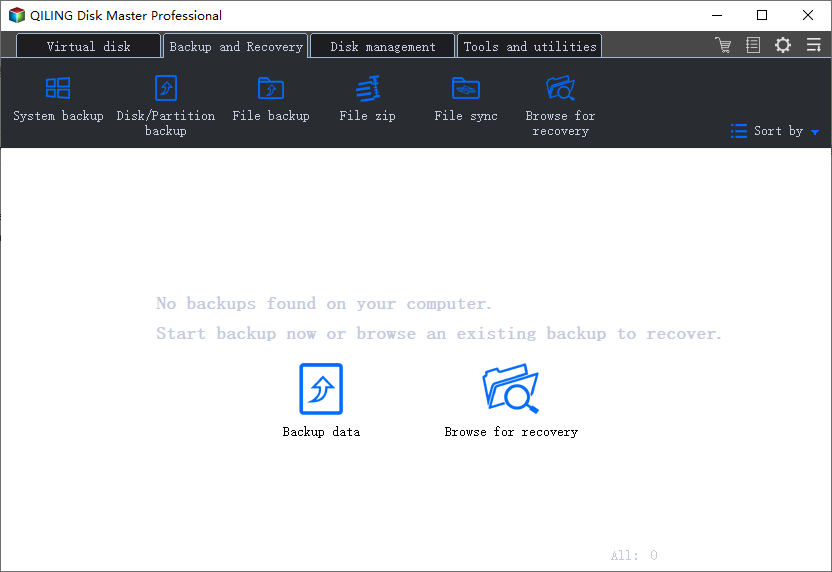
Step 2. Select the files that you want to back up.
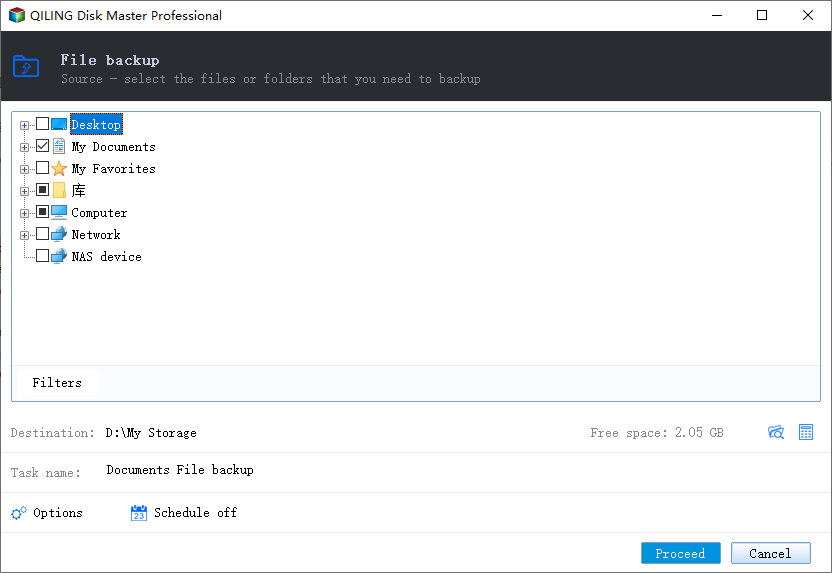
Step 3. Select a destination to save your backup of the selected files.
You'd better create the backup file in some other storage media or in some other drive. If not, there may be a risk of the backup file getting corrupted or destroyed.
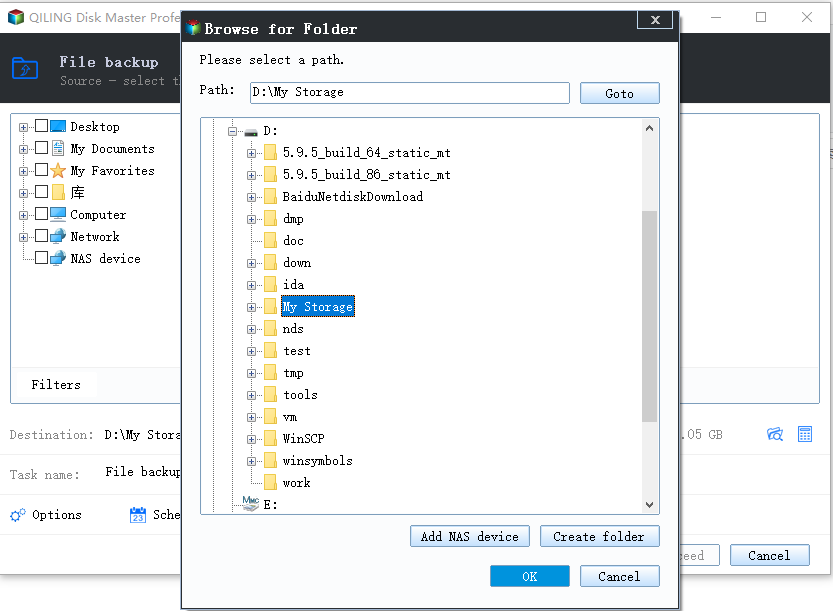
Advanced backup settings are useful when you want to create a flexible and automatic backup plan.
The schedule is to create an automatic backup plan.
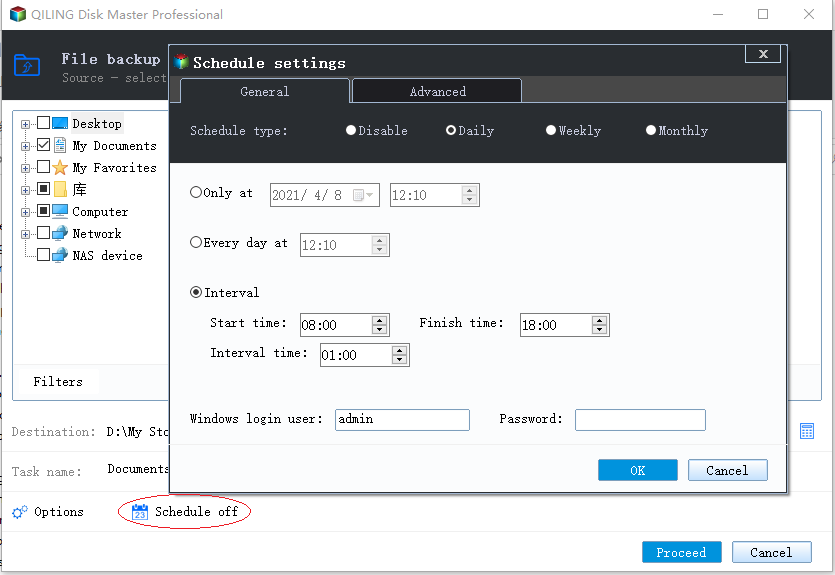
The Image-reserve strategy is to reserve the limited image as per image retention rule.
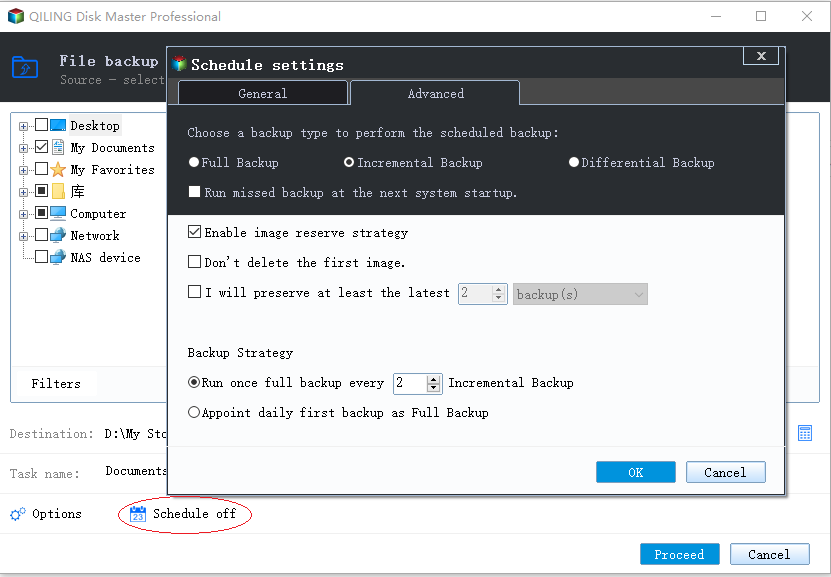
Backup options are to edit the advanced parameters.
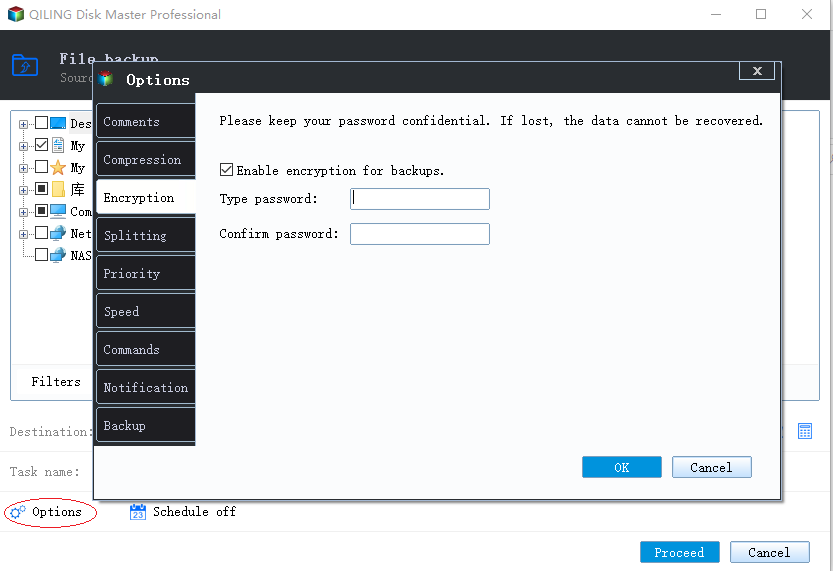
Step 4. Click "Proceed" to execute your operation.
Choose the One You Like, Start Back Up Now
That's all the three Windows 10 backup options. The most recommended options are Windows Files History and Qiling Backup. No matter which one to choose, always remember that making backups is the best way to protect your data.
Related Articles
- [Solved] This Application Was Unable to Start Correctly (Error Code: 0xc000007b)
- [7 Solutions] How Do I Backup Computer to Cloud? Here Is the Complete Guide
- COVID-19 Safely and Effectively Work from Home Backup and Recovery Plan
- How to Clone SSD to Larger SSD in Windows 10/8/7
- How to Automatically Backup Files to An External Hard Drive in 3 Ways